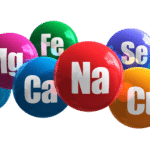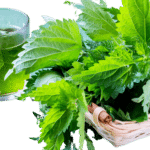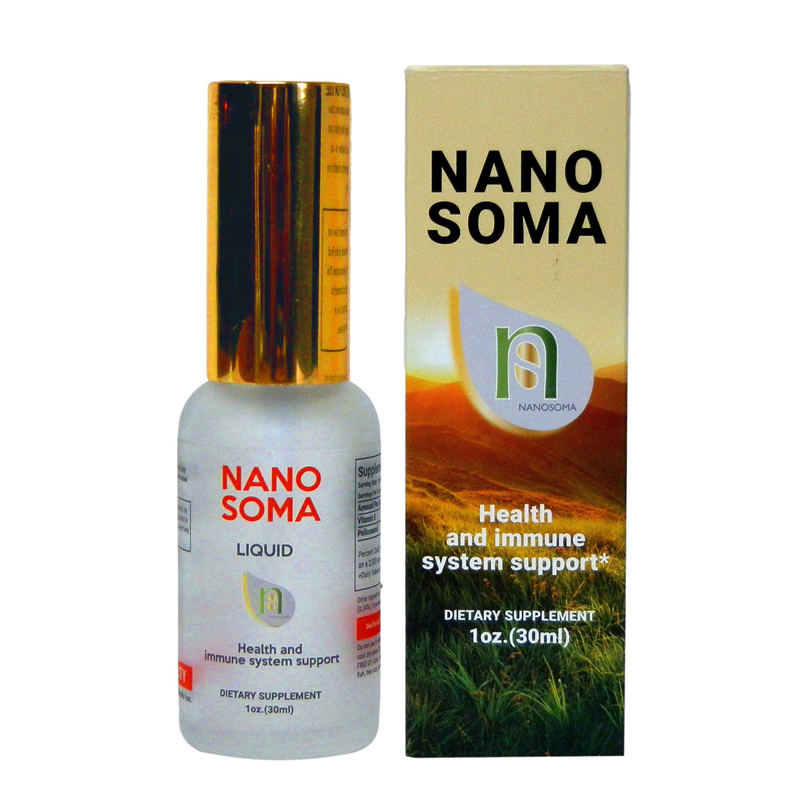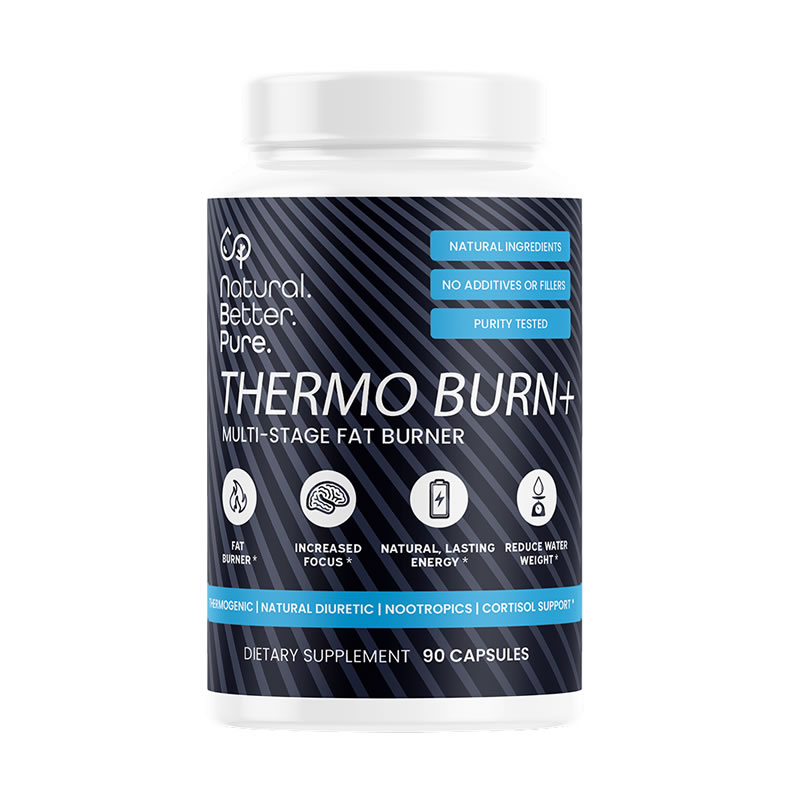No products in the cart.
Deadly Diabetes Deception
Summary
If you are an American diabetic, your physician will never tell you that most cases of diabetes are curable. If you have diabetes and depend your medical doctor’s orthodox treatment, sooner or later your disease and symptoms will worsen. Type II diabetes is curable. Greed and dishonest science have promoted a lucrative worldwide epidemic of diabetes that honesty and good science can quickly reverse by naturally restoring the body’s blood-sugar control mechanism By the time you get to the end of this article, you are going to know that. You’re going to know why it isn’t routinely being cured. And, you’re going to know how to cure it.
Introduction
If you are an American diabetic, your physician will never tell you that most cases of diabetes are curable. In fact, if you even mention the “cure” word around him, he will likely become upset and irrational. His medical school training only allows him to respond to the word “treatment”. For him, the “cure” word does not exist. Diabetes, in its modern epidemic form, is a curable disease and has been for at least 40 years. In 2001, the most recent year for which US figures are posted, 934,550 Americans died from out-of-control symptoms of this disease.1
Your physician will also never tell you that, at one time, strokes, both ischaemic and haemorrhagic, heart failure due to neuropathy as well as both ischaemic and haemorrhagic coronary events, obesity, atherosclerosis, elevated blood pressure, elevated cholesterol, elevated triglycerides, impotence, retinopathy, renal failure, liver failure, polycystic ovary syndrome, elevated blood sugar, systemic candida, impaired carbohydrate metabolism, poor wound healing, impaired fat metabolism, peripheral neuropathy as well as many more of today’s disgraceful epidemic disorders were once well understood often to be but symptoms of diabetes. If you contract diabetes and depend upon orthodox medical treatment, sooner or later you will experience one or more of its symptoms as the disease rapidly worsens.
It is now common practice to refer to these symptoms as if they were separable, independent diseases with separate, unrelated treatments provided by competing medical specialists. It is true that many of these symptoms can and sometimes do result from other causes; however, it is also true that this fact has been used to disguise the causative role of diabetes and to justify expensive, ineffective treatments for these symptoms. Epidemic Type II diabetes is curable. By the time you get to the end of this article, you are going to know that. You’re going to know why it isn’t routinely being cured. And, you’re going to know how to cure it. You are also probably going to be angry at what a handful of greedy people have surreptitiously done to the entire orthodox medical community and to its trusting patients.
The Diabetes Industry
Today’s diabetes industry is a massive community that has grown step by step from its dubious origins in the early 20th century. In the last 80 years it has become enormously successful at shutting out competitive voices that attempt to point out the fraud involved in modern diabetes treatment. It has matured into a religion. And, like all religions, it depends heavily upon the faith of the believer. So successful has it become that it verges on blasphemy to suggest that, in most cases, the kindly high priest with the stethoscope draped prominently around his neck is a charlatan and a fraud.
In the large majority of cases, he has never cured a single case of diabetes in his entire medical career. The financial and political influence of this medical community has almost totally subverted the original intent of our regulatory agencies. They routinely approve death-dealing, ineffective drugs with insufficient testing. Former commissioner of the FDA, Dr. Herbert Ley, in testimony before a US Senate hearing, commented: “People think the FDA is protecting them. It isn’t. What the FDA is doing and what the public thinks it’s doing are as different as night and day.”2
The financial and political influence of this medical community dominates our entire medical insurance industry. Although this is beginning to change, in America it is still difficult to find employer group medical insurance to cover effective alternative medical treatments. Orthodox coverage is standard in all states. Alternative medicine is not. For example, there are only 1,400 licensed Naturopaths in 11 states compared to over 3.4 million orthodox licensees in 50 states.3 Generally, only approved treatments from licensed, credentialled practitioners are insurable. This, in effect, neatly creates a special kind of money that can only be spent within the orthodox medical and drug industry. No other industry in the world has been able to manage the politics of convincing people to accept so large a part of their pay in a form that often does not allow them to spend it as they see fit.
The financial and political influence of this medical community completely controls virtually every diabetes publication in the country. Many diabetes publications are subsidized by ads for diabetes supplies. No diabetes editor is going to allow the truth to be printed in his magazine. This is why the diabetic only pays about one-quarter to one-third of the cost of printing the magazine he depends upon for accurate information. The rest is subsidized by diabetes manufacturers with a vested commercial interest in preventing diabetics from curing their diabetes. When looking for a magazine that tells the truth about diabetes, look first to see if it is full of ads for diabetes supplies.
And then there are the various associations that solicit annual donations to find a cure for their proprietary disease. Every year they promise that a cure is just around the corner-just send more money! Some of these very same associations have been clearly implicated in providing advice that promotes the progress of diabetes in their trusting supporters. For example, for years they heavily promoted exchange diets,4which are in fact scientifically worthless-as anyone who has ever tried to use them quickly finds out. They ridiculed the use of glycaemic tables, which are actually very helpful to the diabetic. They promoted the use of margarine as heart healthy, long after it was well understood that margarine causes diabetes and promotes heart failure.5
If people ever wake up to the cure for diabetes that has been suppressed for 40 years, these associations will soon be out of business. But until then, they nonetheless continue to need our support. For 40 years, medical research has consistently shown with increasing clarity that diabetes is a degenerative disease directly caused by an engineered food supply that is focused on profit instead of health. Although the diligent can readily glean this information from a wealth of medical research literature, it is generally otherwise unavailable. Certainly this information has been, and remains, largely unavailable in the medical schools that train our retail doctors. Prominent among the causative agents in our modern diabetes epidemic are the engineered fats and oils that are sold in today’s supermarkets. The first step to curing diabetes is to stop believing the lie that the disease is incurable.
Diabetes History
In 1922, three Canadian Nobel Prize winners, Banting, Best and Macleod, were successful in saving the life of a fourteen-year-old diabetic girl in Toronto General Hospital with injectable insulin.6 Eli Lilly was licensed to manufacture this new wonder drug, and the medical community basked in the glory of a job well done. It wasn’t until 1933 that rumors about a new rogue form of diabetes surfaced. This was in a paper presented by Joslyn, Dublin and Marks and printed in the American Journal of Medical Sciences. This paper, “Studies on Diabetes Mellitus”,7 discussed the emergence of a major epidemic of a disease which looked very much like the diabetes of the early 1920s, only it did not respond to the wonder drug, insulin. Even worse, sometimes insulin treatment killed the patient.
This new disease became known as “insulin-resistant diabetes” because it had the elevated blood sugar symptom of diabetes but responded poorly to insulin therapy. Many physicians had considerable success in treating this disease through diet. A great deal was learned about the relationship between diet and diabetes in the 1930s and 1940s. Diabetes, which had a per-capita incidence of 0.0028% at the turn of the century, had by 1933 zoomed 1,000% in the United States to become a disease seen by many doctors.8 This disease, under a variety of aliases, was destined to go on to wreck the health of over half the American population and incapacitate almost 20% by the 1990s.9
In 1950, the medical community became able to perform serum insulin assays. These assays quickly revealed that this new disease wasn’t classic diabetes; it was characterized by sufficient, often excessive, blood insulin levels. The problem was that the insulin was ineffective; it did not reduce blood sugar. But since the disease had been known as diabetes for almost 20 years, it was renamed Type II diabetes. This was to distinguish it from the earlier Type I diabetes, caused by insufficient insulin production by the pancreas. Had the dietary insights of the previous 20 years dominated the medical scene from this point and into the late 1960s, diabetes would have become widely recognized as curable instead of merely treatable. Instead, in 1950, a search was launched for another wonder drug to deal with the Type II diabetes problem.
Cure versus Treatment
This new, ideal, wonder drug would be effective, like insulin, in remitting obvious adverse symptoms of the disease but not effective in curing the underlying disease. Thus it would be needed continually for the remaining life of the patient. It would have to be patentable; that is, it could not be a natural medication because these are non-patentable. Like insulin, it would have to be highly profitable to manufacture and distribute. Mandatory government approvals would be required to stimulate physicians to prescribe it as a prescription drug. Testing required for these approvals would have to be enormously expensive to prevent other, unapproved, medications from becoming competitive.
This is the origin of the classic medical protocol of “treating the symptoms”. By doing this, both the drug company and the doctor could prosper in business, and the patient, while not being cured of his disease, was sometimes temporarily relieved of some of his symptoms. Additionally, natural medications that actually cured disease would have to be suppressed. The more effective they were, the more they would need to be suppressed and their proponents jailed as quacks. After all, it wouldn’t do to have some cheap, effective, natural medication cure disease in a capital-intensive monopoly market specifically designed to treat symptoms without curing disease.
Often the natural substance really did cure disease. This is why the force of law has been and is being used to drive the natural, often superior, medicines from the marketplace, to remove the “cure” word from the medical vocabulary and to undermine totally the very concept of a free marketplace in the medical business. Now it is clear why the “cure” word is so vigorously suppressed by law. The FDA has extensive Orwellian regulations that prohibit the use of the “cure” word to describe any competing medicine or natural substance. It is precisely because many natural substances do actually both cure and prevent disease that this word has become so frightening to the drug and orthodox medical community.
The Commercial Value of Symptoms
After the drug development policy was redesigned to focus on ameliorating symptoms rather than curing disease, it became necessary to reinvent the way drugs were marketed. This was done in 1949 in the midst of a major epidemic of insulin-resistant diabetes. So, in 1949, the US medical community reclassified the symptoms of diabetes10 along with many other disease symptoms into diseases in their own right. With this reclassification as the new basis for diagnosis, competing medical specialty groups quickly seized upon related groups of symptoms as their own proprietary symptoms set.
Thus the heart specialist, endocrinologist, allergist, kidney specialist and many others started to treat the symptoms for which they felt responsible. As the underlying cause of the disease was widely ignored, all focus on actually curing anything was completely lost. Heart failure, for example, which had previously been understood often to be but a symptom of diabetes, now became a disease not directly connected to diabetes. It became fashionable to think that diabetes “increased cardiovascular risk”. The causal role of a failed blood-sugar control system in heart failure became obscured.
Consistent with the new medical paradigm, none of the treatments offered by the heart specialist actually cures, or is even intended to cure, their proprietary disease. For example, the three-year survival rate for bypass surgery is almost exactly the same as if no surgery was undertaken.11 Today, over half of the people in America suffer from one or more symptoms of this disease. In its beginnings, it became well known to physicians as Type II diabetes, insulin-resistant diabetes, insulin resistance, adult-onset diabetes or, more rarely, hyperinsulinaemia.
According to the American Heart Association, almost 50% of Americans suffer from one or more symptoms of this disease. One third of the US population is morbidly obese; half of the population is overweight. Type II diabetes, also called adult-onset diabetes, now appears routinely in six-year-old children. Many degenerative diseases can be traced to a massive failure of the endocrine system. This was well known to the physicians of the 1930s as insulin-resistant diabetes. This basic underlying disorder is known to be a derangement of the blood-sugar control system by badly engineered fats and oils. It is exacerbated and complicated by the widespread lack of other essential nutrition that the body needs to cope with the metabolic consequences of these poisons.
All fats and oils are not equal. Some are healthy and beneficial; many, commonly available in the supermarket, are poisonous. The health distinction is not between saturated and unsaturated, as the fats and oils industry would have us believe. Many saturated oils and fats are highly beneficial; many unsaturated oils are highly poisonous. The important health distinction is between natural and engineered. There exists great dishonesty in advertising in the fats and oils industry. It is aimed at creating a market for cheap junk oils such as soy, cottonseed and rapeseed oils. With an informed and aware public, these oils would have no market at all, and the USA-indeed, the world-would have far fewer cases of diabetes.
Epidemiological Lifestyle Link
As early as 1901, efforts had been made to manufacture and sell food products by the use of automated factory machinery because of the immense profits that were possible. Most of the early efforts failed because people were inherently suspicious of food that wasn’t farm fresh and because the technology was poor. As long as people were prosperous, suspicious food products made little headway. Crisco,12 the artificial shortening, was once given away free in 21 – 2 lb cans in an unsuccessful effort to influence American housewives to trust and buy the product in preference to lard. Margarine was introduced and was bitterly opposed by the dairy states in the USA. With the advent of the Depression of the 1930s, margarine, Crisco and a host of other refined and hydrogenated products began to make significant penetration into the food markets of America.
Support for dairy opposition to margarine faded during World War II because there wasn’t enough butter for the needs of both the civilian population and the military.13 At this point, the dairy industry, having lost much support, simply accepted a diluted market share and concentrated on supplying the military. Flax oils and fish oils, which were common in the stores and considered dietary staples before the American population became diseased, have disappeared from the shelf. The last supplier of flax oil to the major distribution chains was Archer Daniels Midland, and it stopped producing and supplying the product in 1950. More recently, one of the most important of the remaining, genuinely beneficial, fats was subjected to a massive media disinformation campaign that portrayed it as a saturated fat that causes heart failure. As a result, it has virtually disappeared from the supermarket shelves.
Thus was coconut oil removed from the food chain and replaced with soy oil, cottonseed oil and rapeseed oil.14 Our parents and grandparents would never have swapped a fine, healthy oil like coconut oil for these cheap, junk oils. It was shortly after this successful media blitz that the US populace lost its war on fat. For many years, coconut oil had been our most effective dietary weight-control agent. The history of the engineered adulteration of our once-clean food supply exactly parallels the rise of the epidemic of diabetes and hyperinsulinaemia now sweeping the United States as well as much of the rest of the world. The second step to a cure for this disease epidemic is to stop believing the lie that our food supply is safe and nutritious.
The Nature of the Disease
Diabetes is classically diagnosed as a failure of the body to metabolize carbohydrates properly. Its defining symptom is a high blood-glucose level. Type I diabetes results from insufficient insulin production by the pancreas. Type II diabetes results from ineffective insulin. In both types, the blood-glucose level remains elevated. Neither insufficient insulin nor ineffective insulin can limit post-prandial (after-eating) blood sugar to the normal range. In established cases of Type II diabetes, these elevated blood sugar levels are often preceded and accompanied by chronically elevated insulin levels and by serious distortions of other endocrine hormonal markers. The ineffective insulin is no different from effective insulin. Its ineffectiveness lies in the failure of the cell population to respond to it. It is not the result of any biochemical defect in the insulin itself. Therefore, it is appropriate to note that this is a disease that affects almost every cell in the 70 trillion or so cells of the body. All of these cells are dependent upon the food that we eat for the raw materials they need for self repair and maintenance.
The classification of diabetes as a failure to metabolize carbohydrates is a traditional classification that originated in the early 19th century when little was known about metabolic diseases or processes.15 Today, with our increased knowledge of these processes, it would appear quite appropriate to define Type II diabetes more fundamentally as a failure of the body to metabolize fats and oils properly. This failure results in a loss of effectiveness of insulin and in the consequent failure to metabolize carbohydrates. Unfortunately, much medical insight into this matter, except at the research level, remains hampered by its 19th-century legacy. Thus Type II diabetes and its early hyperinsulinaemic symptoms are whole-body symptoms of this basic cellular failure to metabolize glucose properly. Each cell of the body, for reasons which are becoming clearer, finds itself unable to transport glucose from the bloodstream to its interior. The glucose then remains in the bloodstream, or is stored as body fat or as glycogen, or is otherwise disposed of in urine.
It appears that when insulin binds to a cell membrane receptor, it initiates a complex cascade of biochemical reactions inside the cell. This causes a class of glucose transporters known as GLUT4 molecules to leave their parking area inside the cell and travel to the inside surface of the plasma cell membrane. When in the membrane, they migrate to special areas of the membrane called caveolae areas.16 There, by another series of biochemical reactions, they identify and hook up with glucose molecules and transport them into the interior of the cell by a process called endocytosis. Within the cell’s interior, this glucose is then burned as fuel by the mitochondria to produce energy to power cellular activity.
Thus these GLUT4 transporters lower glucose in the bloodstream by transporting it out of the bloodstream into all the cells of the body. Many of the molecules involved in these glucose- and insulin-mediated pathways are lipids; that is, they are fatty acids. A healthy plasma cell membrane, now known to be an active player in the glucose scenario, contains a complement of cis-type w=3 unsaturated fatty acids.17 This makes the membrane relatively fluid and slippery. When these cis- fatty acids are chronically unavailable because of our diet, trans- fatty acids and short- and medium-chain saturated fatty acids are substituted in the cell membrane. These substitutions make the cellular membrane stiffer and more sticky, and inhibit the glucose transport mechanism.18
Thus, in the absence of sufficient cis omega 3 fatty acids in our diet, these fatty acid substitutions take place, the mobility of the GLUT4 transporters is diminished, the interior biochemistry of the cell is changed and glucose remains elevated in the bloodstream. Elsewhere in the body, the pancreas secretes excess insulin, the liver manufactures fat from the excess sugar, the adipose cells store excess fat, the body goes into a high urinary mode, insufficient cellular energy is available for bodily activity and the entire endocrine system becomes distorted. Eventually, pancreatic failure occurs, body weight plummets and a diabetic crisis is precipitated. Although there remains much work to be done to elucidate fully all of the steps in all of these pathways, this clearly marks the beginning of a biochemical explanation for the known epidemiological relationship between cheap, engineered dietary fats and oils and the onset of Type II diabetes.
Orthodox Medical Treatment
After the diagnosis of diabetes, modern orthodox medical treatment consists of either oral hypoglycaemic agents or insulin.
– Oral hypoglycaemic agents
In 1955, oral hypoglycaemic drugs were introduced. Currently available oral hypoglycaemic agents fall into five classifications according to their biophysical mode of action.19 These classes are: biguanides; glucosidase inhibitors; meglitinides; sulphonylureas; and thiazolidinediones.
The biguanides lower blood sugar in three ways. They inhibit the normal release by the liver of its glucose stores, they interfere with intestinal absorption of glucose from ingested carbohydrates, and they are said to increase peripheral uptake of glucose.
The glucosidase inhibitors are designed to inhibit the amylase enzymes produced by the pancreas and which are essential to the digestion of carbohydrates. The theory is that if the digestion of carbohydrates is inhibited, the blood sugar level cannot be elevated.
The meglitinides are designed to stimulate the pancreas to produce insulin in a patient that likely already has an elevated level of insulin in their bloodstream. Only rarely does the doctor even measure the insulin level. Indeed, these drugs are frequently prescribed without any knowledge of the preexisting insulin level. The fact that an elevated insulin level is almost as damaging as an elevated glucose level is widely ignored.
The sulphonylureas are another pancreatic stimulant class designed to stimulate the production of insulin. Serum insulin determinations are rarely made by the doctor before he prescribes these drugs. They are often prescribed for Type II diabetics, many of whom already have elevated ineffective insulin. These drugs are notorious for causing hypoglycemia as a side effect.
The thiazolidinediones are famous for causing liver cancer. One of them, Rezulin, was approved in the USA through devious political infighting, but failed to get approval in the UK because it was known to cause liver cancer. The doctor who had responsibility to approve it at the FDA refused to do so. It was only after he was replaced by a more compliant official that Rezulin gained approval by the FDA. It went on to kill well over 100 diabetes patients and cripple many others before the fight to get it off the market was finally won. Rezulin was designed to stimulate the uptake of glucose from the bloodstream by the peripheral cells and to inhibit the normal secretion of glucose by the liver. The politics of why this drug ever came onto market, and then remained in the market for such an unexplainable length of time with regulatory agency approval, is not clear.20 As of April 2000, lawsuits commenced to clarify this situation.21
– Insulin
Today, insulin is prescribed for both the Type I and Type II diabetics. Injectable insulin substitutes for the insulin that the body no longer produces. Of course, this treatment, while necessary for preserving the life of the Type I diabetic, is highly questionable when applied to the Type II diabetic. It is important to note that neither insulin nor any of these oral hypoglycaemic agents exerts any curative action whatsoever on any type of diabetes. None of these medical strategies is designed to normalize the cellular uptake of glucose by the cells that need it to power their activity. The prognosis with this orthodox treatment is increasing disability and early death from heart or kidney failure or the failure of some other vital organ.
Alternative Medical Treatment
The third step to a cure for this disease is to become informed and to apply an alternative methodology that is soundly based upon good science. Effective alternative treatment that directly leads to a cure is available today for some Type I and for many Type II diabetics. About 5% of the diabetic population suffers from Type I diabetes; about 95% has Type II diabetes.22 Gestational diabetes is simply ordinary diabetes contracted by a woman who is pregnant. For the Type I diabetic, an alternative methodology for the treatment of Type I diabetes is now available. It was developed in modern hospitals in Madras, India, and subjected to rigorous double-blind studies to prove its efficacy.23 It operates to restore normal pancreatic beta cell function so that the pancreas can again produce insulin as it should.
This approach apparently was capable of curing Type I diabetes in over 60% of the patients on whom it was tested. The major complication lies in whether the antigens that originally led to the autoimmune destruction of these beta cells have disappeared from or remain in the body. If they remain, a cure is less likely; if they have disappeared, the cure is more likely. For reasons already discussed, this methodology is not likely to appear in the United States any time soon, and certainly not in the American orthodox medical community. The goal of any effective alternative program is to repair and restore the body’s own blood-sugar control mechanism. It is the malfunctioning of this mechanism that, over time, directly causes all of the many debilitating symptoms that make orthodox treatment so financially rewarding for the diabetes industry. For Type II diabetes, the steps in the program are:24
– Repair the faulty blood sugar control system.
This is done simply by substituting clean, healthy, beneficial fats and oils in the diet for the pristine-looking but toxic trans-isomer mix found in attractive plastic containers on supermarket shelves. Consume only flax oil, fish oil and occasionally cod liver oil until blood sugar starts to stabilize. Then add back healthy oils such as butter, coconut oil, olive oil and clean animal fat. Read labels; refuse to consume cheap junk oils when they appear in processed food or on restaurant menus. Diabetics are chronically short of minerals; they need to add a good-quality, broad-spectrum mineral supplement to the diet.
– Control blood sugar manually during the recovery cycle.
Under medical supervision, gradually discontinue all oral hypoglycaemic agents along with any additional drugs given to counteract their side effects. Develop natural blood-sugar control by the use of glycaemic tables, by consuming frequent small meals (including fibre-rich foods), by regular post-prandial exercise, and by the complete avoidance of all sugars along with the judicious use of only nontoxic sweeteners.25 Avoid alcohol until blood sugar stabilizes in the normal range. Keep score by using a pinprick-type glucose meter. Keep track of everything you do with a medical diary.
– Restore a proper balance of healthy fats and oils when the blood sugar controller again works.
Permanently remove from the diet all cheap, toxic, junk fats and oils as well as the processed and restaurant foods that contain them. When the blood sugar controller again starts to work correctly, gradually introduce additional healthy foods to the diet. Test the effect of these added foods by monitoring blood sugar levels with the pinprick-type blood sugar monitor. Be sure to include the results of these tests in your diary also.
– Continue the program until normal insulin values are also restored
after blood sugar levels begin to stabilize. in the normal region. Once blood sugar levels fall into the normal range, the pancreas will gradually stop overproducing insulin. This process will typically take a little longer and can be tested by having your physician send a sample of your blood to a lab for a serum insulin determination. A good idea is to wait a couple of months after blood sugar control is restored and then have your physician check your insulin level. It’s nice to have blood sugar in the normal range; it’s even nicer to have this accomplished without excess insulin in the bloodstream.
– Separately repair the collateral damage done by the disease.
Vascular problems caused by a chronically elevated glucose level will normally reverse themselves without conscious effort. The effects of retinopathy and of peripheral neuropathy, for example, will usually self repair. However, when the fine capillaries in the basement membranes of the kidneys begin to leak due to chronic high blood glucose, the kidneys compensate by laying down scar tissue to prevent the leakage. This scar tissue remains even after the diabetes is cured, and is the reason why the kidney damage is not believed to self repair.
A word of warning…
When retinopathy develops, there may be a temptation to have the damage repaired by laser surgery. This laser technique stops the retinal bleeding by creating scar tissue where the leaks have developed. This scar tissue will prevent normal healing of the fine capillaries in the eye when the diabetes is reversed. By reversing the diabetes instead of opting for laser surgery, there is an excellent chance that the eye will heal completely. However, if laser surgery is done, this healing will always be complicated by the scar tissue left by the laser.
The arterial and vascular damage done by years of elevated sugar and insulin and by the proliferation of systemic candida will slowly reverse due to improved diet. However, it takes many years to clean out the arteries by this form of oral chelation. Arterial damage can be reversed much more quickly by using intravenous chelation therapy.26 What would normally take many years through diet alone can often be done in six months with intravenous therapy. This is reputed to be effective over 80% of the time. For obvious reasons, don’t expect your doctor to approve of this, particularly if he’s a heart specialist.
Recovery Time
The prognosis is usually swift recovery from the disease and restoration of normal health and energy levels in a few months to a year or more. The length of time that it takes to effect a cure depends upon how long the disease was allowed to develop. For those who work quickly to reverse the disease after early discovery the time is usually a few months or less. For those who have had the disease for many years this recovery time may lengthen to a year or more. Thus there is good reason to get busy reversing this disease as soon as it becomes clearly identified. By the time you get to this point in this article and if we’ve done a good job of explaining our diabetes epidemic you should know what causes it what orthodox medical treatment is all about and why diabetes has become a national and international disgrace. Of even greater importance you have become acquainted with a self-help program that has demonstrated great potential to actually cure this disease.
About the Author:
Thomas Smith is a reluctant medical investigator having been forced into curing his own diabetes because it was obvious that his doctor would not or could not cure it. He has published the results of his successful diabetes investigation in his self-help manual Insulin: Our Silent Killer written for the layperson but also widely valued by the medical practitioner. This manual details the steps required to reverse Type II diabetes and references the work being done with Type I diabetes. The book may be purchased from the author at PO Box 7685 Loveland Colorado 80537 USA (North American residents send US $25.00; overseas residents should contact the author for payment and shipping instructions).
Thomas Smith has also posted a great deal of useful information about diabetes on his website http://www.healingmatters.com. He can be contacted by telephone at +1 (970) 669 9176 and by email at [email protected].
Endnotes:
- National Center for Health Statistics “”Fast Stats”” Deaths/Mortality Preliminary 2001 data
- Dr Herbert Ley in response to a question from Senator Edward Long about the FDA during US Senate hearings in 1965
- Eisenberg David M. MD “”Credentialing complementary and alternative medical providers”” Annals of Internal Medicine 137(12):968 (December 17 2002)
- American Diabetes Association and the American Dietetic Association The Official Pocket Guide to Diabetic Exchanges McGraw-Hill/Contemporary Distributed Products newly updated March 1 1998
- American Heart Association “”How Do I Follow a Healthy Diet?”” American Heart Association National Center (7272 Greenville Avenue Dallas Texas 75231-4596 USA) http://www.americanheart.org
- Brown. J.A.C. Pears Medical Encyclopedia Illustrated 1971 p. 250
- Joslyn E.P. Dublin L.I. Marks H.H. “”Studies on Diabetes Mellitus”” American Journal of Medical Sciences 186:753-773 (1933)
- “”Diabetes Mellitus”” Encyclopedia Americana Library Edition vol. 9 1966 pp. 54-56
- American Heart Association “”Stroke (Brain Attack)”” August 28 1998 http://www.amhrt.org/ScientificHStats98/05stroke.html; American Heart Association “”Cardiovascular Disease Statistics”” August 28 1998 http://www.amhrt.org/Heart_and_Stroke_A_Z_Guide/cvds.html; “”Statistics related to overweight and obesity”” http://niddk.nih.gov/health/nutrit/pubs/statobes.htm; http://www.winltdusa.com/about/infocenter/healthnews/articles/obesestats.htm
- “”Diabetes Mellitus”” Encyclopedia Americana ibid. pp. 54-55
- The Veterans Administration Coronary Artery Bypass Co-operative Study Group “”Eleven-year survival in the Veterans Administration randomized trial of coronary bypass surgery for stable angina”” New Eng. J. Med. 311:1333-1339 (1984); Coronary Artery Surgery Study (CASS) “”A randomized trial of coronary artery bypass surgery: quality of life in patients randomly assigned to treatment groups”” Circulation 68(5):951-960 (1983)
- Trager J. The Food Chronology Henry Holt & Company New York 1995 (items listed by date)
- “”Margarine”” Encyclopedia Americana Library Edition vol. 9 1966 pp. 279-280
- Fallon S. Connolly P. Enig M.C. Nourishing Traditions Promotion Publishing 1995; Enig M.C. “”Coconut: In Support of Good Health in the 21st Century”” http://www.livecoconutoil.com/maryenig.htm
- Houssay Bernardo A. MD et al. Human Physiology McGraw-Hill Book Company 1955 pp. 400-421
- Gustavson J. et al. “”Insulin-stimulated glucose uptake involves the transition of glucose transporters to a caveolae-rich fraction within the plasma cell membrane: implications for type II diabetes”” Mol. Med. 2(3):367-372 (May 1996)
- Ganong William F. MD Review of Medical Physiology 19th edition 1999 p. 9 pp. 26-33
- Pan D.A. et al. “”Skeletal muscle membrane lipid composition is related to adiposity and insulin action”” J. Clin. Invest.96(6):2802-2808 (December 1995)
- Physicians’ Desk Reference 53rd edition 1999
- Smith Thomas Insulin: Our Silent Killer Thomas Smith Loveland Colorado revised 2nd edition July 2000 p. 20
- Law Offices of Charles H. Johnson & Associates (telephone 1 800 535 FREE 5727 toll free in North America)
- American Heart Association “”Diabetes Mellitus Statistics”” http://www.amhrt.org
- Shanmugasundaram E.R.B. et al. (Dr Ambedkar Institute of Diabetes Kilpauk Medical College Hospital Madras India) “”Possible regeneration of the Islets of Langerhans in Streptozotocin-diabetic rats given Gymnema sylvestre leaf extract”” J. Ethnopharmacology30:265-279 (1990); Shanmugasundaram E.R.B. et al. “”Use of Gemnema sylvestre leaf extract in the control of blood glucose in insulin-dependent diabetes mellitus”” J. Ethnopharmacology 30:281-294 (1990)
- Smith ibid. pp. 97-123
- Many popular artificial sweeteners on sale in the supermarket are extremely poisonous and dangerous to the diabetic; indeed many of them are worse than the sugar the diabetic is trying to avoid; see for example Smith ibid. pp. 53-58.
- Walker Morton MD and Shah Hitendra MD Chelation Therapy Keats Publishing Inc. New Canaan Connecticut 1997 ISBN 0-87983-730-6
Extracted from Nexus Magazine Volume 11 Number 4 (June-July 2004)
PO Box 30 Mapleton Qld 4560 Australia. [email protected]
Telephone: +61 (0)7 5442 9280; Fax: +61 (0)7 5442 9381
Web page at: www.nexusmagazine.com







